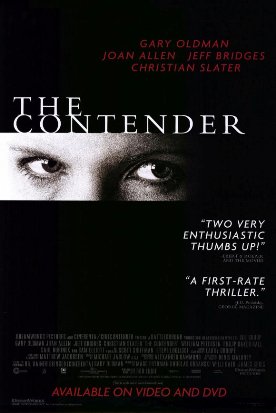Love is the Devil
Love is the Devil written and directed by John Maybury, stars Derek
Jacobi as Francis Bacon, the pioneer of the skull-beneath-the-skin school of
British art. Because he was forbidden by keepers of the Bacon artistic estate to
show actual Bacon canvases on screen, Maybury, who is himself a painter, has had
to confine himself to comment on Bacon’s images by attempting to create a sort
of cinematic analogue for them. This he does by shooting faces as distorted by
mirrors or through the prism of a wineglass, or by intercutting brief visions of
phantasmagoric monsters with more realistic action. It is an interesting idea
but, the movies being what they are, any incipient ideas about Bacon’s art or
his ever-less peculiar vision of reality are overwhelmed by the story of his
long-term homosexual relationship with an East End Cockney burglar called George
Dyer (Daniel Craig).
Jacobi is a fine actor who actually looks like Bacon (though he made a
conscious decision not to try to mimic his distinctive high-pitched voice) and
does a terrific job in the role, as Mr Craig does with the pathetic character of
George. Maybury apparently made some effort to get the historical details right,
and he portrays Bacon as a sexual masochist, asking to be beaten and burned with
cigarettes and telling us in voiceover that he does so because in “submitting to
the pleasure of a dominant partner” he is able to “relinquish all
responsibility.” But in every other way he a sadist to poor George, whom he
treated abominably but who seems nevertheless to have been genuinely attached to
him. What all this has to do with art is far from clear, but you can make up
your own mind.
I for one don’t find Bacon’s own explanation very convincing. “Pleasure is
impossible to define,” he says, because “horror occupies the same territory.”
Well, anything can occupy the same territory, depending on what your idea of
pleasure is. Bacon is, he says ironically, an “optimist” because he is an
“optimist about nothing.” We see him watching the Odessa steps episode of
Eisenstein’s Battleship Potemkin where the baby-carriage, a baby still
in it, bounces down the long flight of stone steps, and laughing. His companion
turns to him, irritated, and says “It’s not The Sound of Music.” But of
course for him it is. Later Maybury stages a car crash with bloody (but
strangely undisfigured corpses lying on the road and Bacon saying in voiceover
calling it “very beautiful.” Such stuff, like suffering at the hands of a
dominant partner, seems to confirm his opinion that “everything is running
down”—the sun and stars are cooling. “It’s the only thing in life that’s
certain, that it’s all running down; it’s all dying.”
Certainly the painter lived his own life in a way consistent with what we
should expect from his paintings. We see him primping one evening before going
out to a gambling club and planning to “cast my rod into the sewer and see what
comes up this time.” But if you don’t share his fascination with life in the
sewers, the movie won’t have much to say to you. Its one worthwhile feature,
apart from the acting of Sir Derek, is the portrait of poor George, part of
whose charm for us as for Bacon is a distinctively cockney uncouthness. He knows
nothing of art, for instance, which makes his attachment to Bacon all the more
poignant. “There were some pitchers at me mum’s,” he tells the artist when he
first learns what he does for a living, “but they were not really for looking
at. They were just sort of there.”
Later, after years of living with Bacon he permits himself a brief moment of
disloyalty while drunk, in the company of some low-life mates intent on robbing
him, by criticizing Bacon’s paintings: “’e can’t even do ’em properly. ‘Oo would
want ‘is pictures in their front room? They don’t even look like the people.”
It’s funny and sad at the same time—particularly as the sentiment is at
once so widely shared and so forlorn.
Discover more from James Bowman
Subscribe to get the latest posts to your email.







